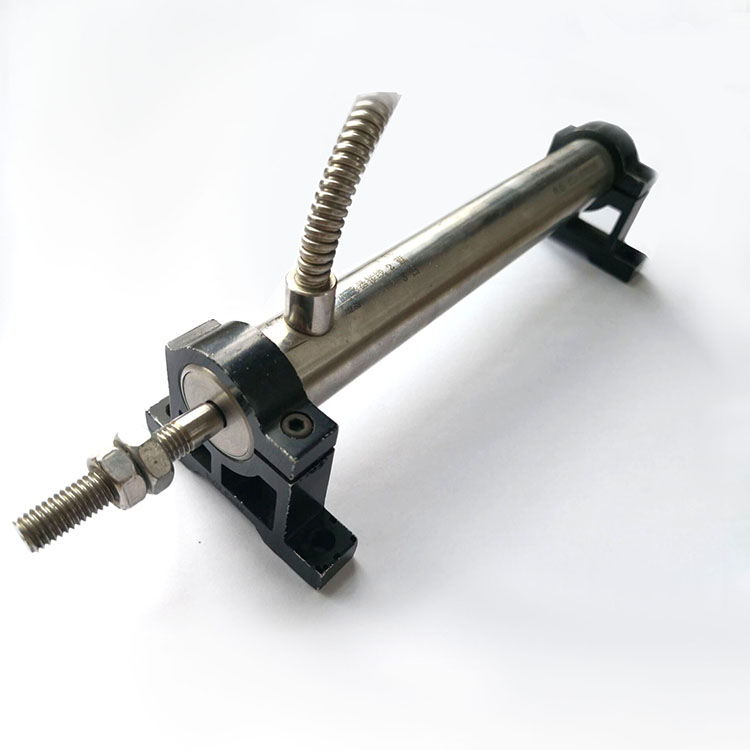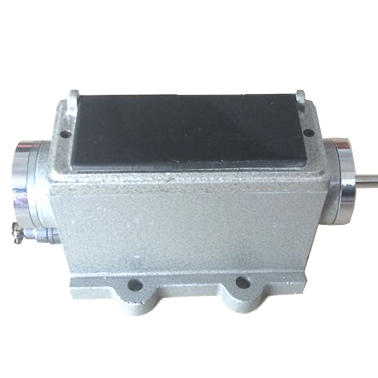CNC machine tools are becoming more and more widely used. In order to facilitate the use and expand the system functions, the numerical control system is generally equipped with a RS232C standard serial communication port for data transmission with peripherals. The standard specifies the voltage standard and range of data and control signals, that is, +15 to +3V is a positive range, +3 to -3V is a conversion level, and -3 to -15V is a negative range to ensure correct transmission of binary data. And perform device control. Because the signal amplitude jumps too much, and in a short microsecond level, the peak-to-peak jump is 20~30V, and the high-frequency interference is formed in the communication. The longer the transmission distance is, the longer the transmission distance is. The more sensitive the interference, the higher the rate and the greater the interference impact. Therefore, RS232C specifies that the length of the communication cable is limited to 15m, and the serial data transmission rate is 0 to 20000 bits/s. This obviously cannot meet the requirements of some special users. Especially when there are many sources of interference in the power grid environment, even if the communication distance is short, the transmitted data may be lost or coded, which will adversely affect the processing of the machine tool. In order to overcome this problem, at present, some advanced numerical control systems are equipped with RS422 serial communication ports with strong anti-interference. These two measures have effectively reduced the inter-line interference, and the differential working mode greatly improves the anti-interference ability to the surrounding environment, thereby greatly increasing the data transmission speed and expanding the transmission distance. Its transmission rate can reach 90000 bits/s, and the transmission distance can be reliably communicated on the twisted pair of more than 1000 meters. RS422 is increasingly being used in industrial field control. Due to the urgent requirements of users, in 1994, we successfully solved the RS422 communication to RS232 on the XK5032 CNC milling machine, and solved the problem of interference between devices for users.
Position sensors are used in a wide range of automation and measurement applications. A key step in selecting a suitable position sensor is understanding the requirements of sensor size, resolution, repeatability, accuracy, mounting constraints and environmental ruggedness. This paper discusses the available position sensing technologies and concludes with a key feature comparison.
Linear position sensors measure the distance between an object and a point of reference, as well as changes in position. They do this by converting displacement into an electrical output. A wide variety of measurement principles can be used to let you make precise and reliable measurements for a broad range of applications. Linear position sensors and measurement systems are used in industrial applications as well as in scientific laboratories.
Within their specified measurement range, LVDT sensors provide excellent linearity. They are capable of detecting very small changes in position and have virtually unlimited resolution. As a result, LVDT sensors are also suitable for measuring high accelerations and high measurement cycles.
Linear inductive position sensors are durable, long-lived, and especially stable under temperature fluctuations. That means they are ideal for measuring linear travel in almost any industrial setting – especially with hydraulic or pneumatic applications.
Position Measurement,Ut-81 Level Indicator,Td-1 Displacement Sensor,4000Td Position Sensor Wuxi Winsun Automation Instrument Co., Ltd , https://www.winsunwx.com 1 Introduction
2 RS422 features
RS422 and RS232C are serial communication ports. The main difference is that the signal is transmitted on the wire. RS232 is the voltage difference between the transmission signal line and the common ground line. RS422 is the voltage used to balance the signal between the signal lines. Poor, the differential (G) and receiver (R) are connected by two symmetrical cables A and B, as shown in Figure 1. 
figure 1
RS422 transmits data using a pair of transmit data lines, a pair of receive data lines, and its performance improvement is based on the following two improvements; 3 implementation method
The following takes the AB8400 numerical control system as an example to illustrate the specific method of communication between the RS422 port of the CNC system and the serial port of the peripheral: 
figure 2
After the above processing, the CNC machine tool can realize data transmission between the peripheral device and the peripheral device through RS422. 4 Conclusion
CNC machine tools use RS422 serial communication port, which can greatly improve anti-interference ability, increase transmission rate, expand transmission distance, reduce transmission error rate, and greatly improve machine tool processing reliability. It has been proved by practice that the effect is very good. And other systems with RS422, such as FANUC, MAHO and other systems can be used, in case of RS232 port damage, RS422 can be used without maintenance, with promotional value.

Abstract: The communication function of CNC machine tools is getting more and more attention from users. This paper mainly introduces the characteristics and differences of serial port RS422 and RS232C, and takes the AB8400 CNC system as an example to illustrate the data between RS422 port and peripheral RS232C port. The method of transmission.